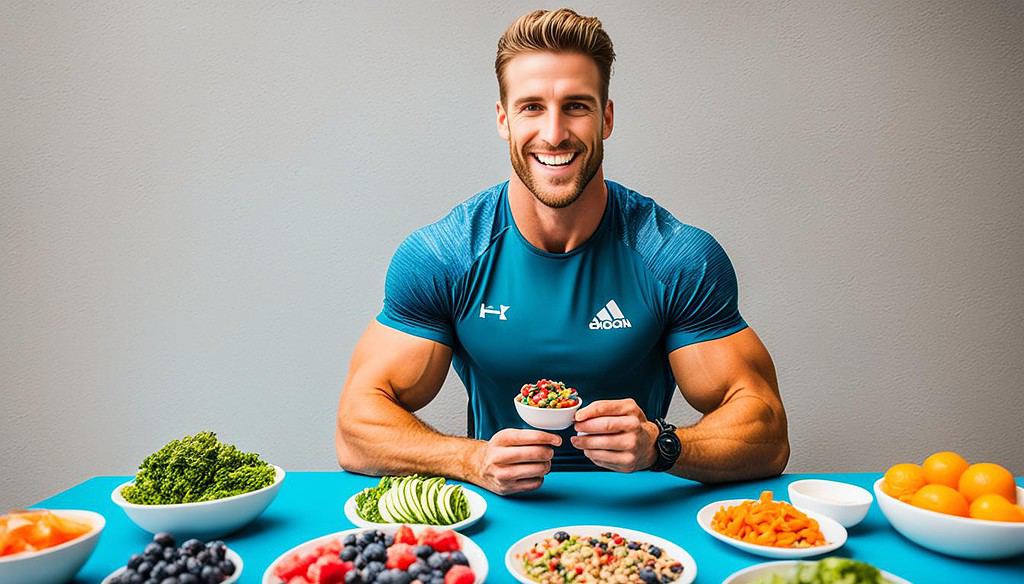Forget the dry encyclopedia entry – we’re diving deep into what fitness actually means for you, cutting through the noise, and figuring out how to make it work in your life, not just in a textbook.
Think of me as that friend who’s been down the fitness rabbit hole, tried a bunch of stuff, made the mistakes, and came out the other side with some actual wisdom to share – not just definitions.
You want to get “fit”? Fantastic! But let’s be honest, that word gets thrown around a lot. Does it mean having six-pack abs? Running a marathon? Or just being able to play with your dog without feeling like you’re going to keel over? Newsflash: It’s probably closer to the last one, but way more empowering.
Real fitness, the kind that genuinely improves your life, isn’t about looking a certain way or hitting arbitrary numbers. It’s about building a body that lets you live your life fully, with energy, capability, and fewer aches and pains. It’s about freedom – the freedom to move, play, lift, and engage without your body being the limiting factor. Ready to ditch the confusion and find your fit? Let’s go.
Key Takeaways:
- Fitness Isn’t Monogamous: Sticking to just one type of exercise is like only eating chicken – you’ll survive, but you’ll miss out on vital nutrients (and get bored!). A balanced mix is crucial.
- Meet the Fab Four: Cardio (engine power), Strength (your chassis and armor), Flexibility/Mobility (smooth movement), and Balance (staying upright). These are your non-negotiables.
- Variety = Resilience: Mixing it up prevents plateaus, reduces boredom, lowers injury risk, and makes you functionally fitter for real life.
- Perfection is a Trap: Forget Instagram “perfect” routines. Consistency with a good enough, varied routine beats sporadic, “perfect” workouts every single time.
- Think Function, Not Just Form: Why do you want to be fit? To lift your kids? Hike without pain? Have energy after work? Focus on that, not just aesthetics.
- Critical Insight: The fitness industry often pushes extremes or isolates components. True fitness integrates them for whole-body health.
Stop Picking Favorites! Why a Balanced Fitness “Diet” Matters

Alright, tough love time. So many people decide “I’m getting fit!” and then only pound the pavement running, only lift weights like a bodybuilder, or only stretch it out in yoga. Sound familiar?
Here’s the critical thinking part: Why do we do this? Often, it’s because:
- We pick what we’re already good at (feels rewarding).
- We pick what we think burns the most calories (often cardio).
- We pick what looks cool or trendy.
- We simply don’t understand why the other stuff matters.
Think of it like building a car. Cardio is your engine. Strength is your frame, wheels, and suspension. Flexibility is the lubrication and ensuring parts move smoothly through their full range. Balance is your steering and stability control. Would you drive a car that only had a powerful engine but a weak frame and no steering? Of course not! Yet, that’s often how we approach fitness.
Focusing solely on one area leads to imbalances:
- Cardio King/Queen: Great endurance, maybe, but potentially weak bones, unstable joints, and difficulty with tasks requiring bursts of strength. Might struggle with CrossFit vs. Bodybuilding differences if they ever tried them.
- Strength Star: Impressive muscle, but poor cardiovascular health means getting winded easily. Lack of flexibility increases injury risk.
- Flexibility Fanatic: Super bendy, but might lack the muscle strength to support those flexible joints or the endurance for sustained activity.
The takeaway? You need a balanced toolkit, not just a hammer.
The Core Four: Your Essential Fitness Toolkit (Explained Better!)
Let’s break down these essential components, ditching the jargon and adding that critical perspective.
Cardiovascular Fitness (Your Body’s Power Grid)
What it REALLY is: Think beyond “heart health.” This is about how well your body can take in oxygen and deliver it to your muscles to produce energy during sustained activity. It’s your internal power grid, keeping everything running efficiently when you’re moving for more than a few minutes.
Why it Matters (Beyond the Obvious): Sure, it lowers heart disease risk, blood pressure, etc. But critically, it builds work capacity and resilience. It boosts mood significantly (more reliable than many quick fixes!), improves sleep quality, helps your body manage blood sugar, and gives you that go-go-go feeling instead of constant fatigue. It’s the foundation for having energy throughout your day. Ever wondered how many calories HIIT burns? That’s cardio working intensely!
Examples (Think Variety!):
- Brisk Walking (Power walking counts!)
- Running/Jogging (Find your pace – learn how to start running)
- Cycling (Road, mountain, stationary – explore cycling for enthusiasts)
- Swimming
- Dancing (Kitchen dance parties count!)
- Rowing Machines
- Hiking
- Circuit Training, HIIT (High-Intensity Interval Training basics)
- Jumping Rope
Critical Question: Are you only doing cardio because you think it’s the “best” for weight loss? While it burns calories, neglecting strength means missing out on metabolism-boosting muscle.
Strength Training (Your Body’s Framework & Metabolic Engine)
What it REALLY is: Making your muscles work against resistance to get stronger. Critically, this isn’t just about aesthetics or lifting huge weights. It’s about building functional capability and making your body more resilient and efficient.
Why it Matters (The Underestimated Powerhouse):
- Boosts Metabolism: Muscle burns more calories at rest than fat. More muscle = higher resting metabolism. This is HUGE for weight management, far beyond the calories burned during the workout. This is key for strength training for weight loss, even for beginners.
- Builds Stronger Bones: Resistance training puts stress on bones, signaling them to become denser. Essential for fighting osteoporosis.
- Supports Joints & Prevents Injury: Strong muscles act like scaffolding, stabilizing joints and absorbing shock.
- Makes Life Easier: Carrying groceries, lifting luggage, getting up off the floor – it all becomes easier.
- Improves Body Composition: Helps you lose fat and gain muscle, changing your body shape.
Examples (No Gym Required!):
- Bodyweight Basics: Squats, Lunges, Push-ups, Planks, Glute Bridges (Master these first!)
- Resistance Bands: Versatile, portable, great for all levels. Learn how to use resistance bands.
- Free Weights: Dumbbells, Kettlebells (fantastic for functional strength!), Barbells.
- Weight Machines: Good for isolating muscles, can feel less intimidating initially.
- Functional Fitness: Think CrossFit (scaled appropriately!), carrying heavy things (farmer’s walks).
Critical Question: Avoiding strength training because you’re afraid of getting “bulky”? It takes very specific training and nutrition to get bodybuilder-level bulk, especially for women. Focus on getting strong, not bulky.
Flexibility & Mobility (Your Body’s Maintenance Plan)
What it REALLY is: Let’s clarify:
- Flexibility: The ability of a muscle to lengthen passively (like holding a hamstring stretch).
- Mobility: Flexibility plus strength and control through that range of motion (like performing a deep squat with good form). Mobility is arguably more important for daily life.
Why it Matters (Beyond Touching Toes): Think of it as essential maintenance. It allows your joints to move through their full intended range without restriction or pain. Good mobility:
- Reduces risk of strains and sprains (a tight muscle is a vulnerable muscle).
- Improves posture and can alleviate aches (especially back pain).
- Makes movement feel smoother and more efficient.
- Enhances performance in other activities (e.g., a deeper squat in strength training). Explore the benefits of mobility training (important for all ages!).
Examples:
- Dynamic Stretching (Ideal pre-workout): Arm circles, leg swings, torso twists.
- Static Stretching (Best post-workout or separate): Holding stretches for 30+ seconds. Check out a full-body stretching routine.
- Yoga: Excellent for both flexibility and mobility, depending on the style.
- Pilates: Focuses on core strength and controlled movement.
- Foam Rolling/Myofascial Release: Helps release muscle tightness.
- Dedicated Mobility Drills: CARs (Controlled Articular Rotations), specific joint movements.
Critical Question: Think you’re “just not flexible”? Flexibility and mobility are trainable skills, not fixed genetic traits. A little bit consistently goes a long way. Neglecting it is asking for trouble down the line.
Balance Training (Your Anti-Gravity System)
What it REALLY is: Training your body’s intricate system (muscles, inner ear, eyes, nerves) to maintain control and stability, preventing unwanted wobbles and falls. It’s highly connected to core strength.
Why it Matters (Not Just for the Elderly!):
- Fall Prevention: This is HUGE, especially as we age, but relevant for everyone (ever tripped on a curb?).
- Improved Coordination & Reaction Time: Helps you react quickly to unexpected shifts in terrain or position.
- Enhanced Athletic Performance: Crucial for almost any sport or activity requiring agility.
- Stronger Core: Balance work inherently engages deep core muscles – learn about the science behind building core strength.
Examples (Integrate Easily!):
- Single-Leg Stance: Try it while brushing your teeth!
- Walking Heel-to-Toe: Like a sobriety test, but for fitness!
- Tai Chi & Yoga: Many poses are balance-focused.
- Using Unstable Surfaces (Carefully!): Balance boards, BOSU balls (master basics first).
- Simply Getting Up & Down: Practicing standing from the floor or a chair without using hands.
Critical Question: Think balance training is boring or unnecessary? Try standing on one foot with your eyes closed for 30 seconds. It reveals how much work your body is doing subconsciously and highlights an area ripe for improvement for almost everyone.
The Missing Piece: Mind-Body Connection

This isn’t just fluffy stuff; it’s foundational. How aware are you of your body? Are you moving mindfully, or just going through the motions? Activities like yoga, Tai Chi, Pilates, and even mindful walking or mindful running train this connection. Why care? It reduces stress (which impacts physical health!), improves form, prevents injury by helping you notice warning signs, and increases enjoyment – making fitness sustainable. Don’t underestimate mental fitness.
The REAL Secret Sauce: Integration, Consistency, and You
Okay, you know the types. Now what? The magic isn’t in mastering each category in isolation. It’s in:
- Integration: How do you weave these together? Many activities blend types! Hiking = cardio + leg strength + balance. Circuit training = cardio + strength. Yoga = flexibility + balance + some strength.
- Consistency: Showing up regularly, even for shorter sessions, is far more effective than heroic, inconsistent efforts. Aim for sustainable habits. Figure out how to make fitness a part of your lifestyle.
- Personalization: What do you enjoy? What fits your schedule and budget? What are your goals? The “perfect” plan on paper is useless if you hate it or can’t stick to it.
- Listening to Your Body: Learn the difference between discomfort (challenging muscles) and pain (warning sign). Rest and recovery aren’t optional; they’re crucial. Explore how to recover from workouts.
Watch Out! Common Fitness Traps & Critical Thinking Errors

Let’s call out some common ways we sabotage ourselves:
- The Comparison Game: “She runs faster,” “He lifts heavier.” Stop. Focus on your progress. Your only competition is yesterday’s you. This ties into avoiding body shaming.
- Quick Fix Mentality: Searching for the “one weird trick” or magic pill. Sorry, real fitness takes consistent effort over time. Be wary of programs promising unrealistic results – understand why most diet programs fail.
- Ignoring Rest & Nutrition: Thinking more exercise is always better. Overtraining leads to burnout and injury. Fueling your body properly is non-negotiable. Learn about essential nutrition for fitness training.
- Analysis Paralysis: Spending so much time researching the “perfect” plan that you never actually start. Start simple, learn as you go.
- “No Pain, No Gain” Fallacy: Pushing through actual pain (not just muscle fatigue) is asking for injury. Listen to your body’s warning signals.
FAQs
What are the absolute MUST-DO types of fitness?
Think Cardio, Strength, Flexibility/Mobility, and Balance. Aim to touch on all four regularly for the best results and overall health.
Seriously, how do I fit this all in? I’m busy!
Blend activities (hike, circuit train). Break it up (10 mins stretch here, 20 mins walk there). Prioritize – schedule it like any important appointment. Even short, consistent efforts add up.
What’s better for weight loss: cardio or strength?
CRITICAL ANSWER: Both! Cardio burns calories during the session. Strength builds muscle, which burns more calories all the time (boosts metabolism). A combination, plus smart nutrition, is the winning ticket. Check out strength training for weight loss.
I’m a total beginner and feel overwhelmed. Where do I start?
Start small! Pick ONE cardio activity you might enjoy (walking is great!) and do it 2-3 times a week. Add 1-2 days of basic bodyweight strength exercises (squats, push-ups against a wall, planks). Add 5 minutes of stretching after. Build from there. See the best exercises for beginners.
How do I stay motivated?
Find activities you like. Set realistic goals. Track your progress (how you feel, not just numbers). Find a workout buddy. Remember your “why.” Don’t let one missed workout derail you – just get back on track. Get tips on how to stay motivated to work out.
Your Move: Fitness is a Practice, Not a Destination

Forget the idea of achieving some final “fit” state. Think of fitness as a lifelong practice, like learning an instrument or a language. Some days you’ll feel energized and make huge progress; other days, just showing up is the win.
The goal isn’t perfection; it’s building a resilient, capable body and a sustainable relationship with movement. Ditch the dogma, ignore the hype, and listen to your own body. Experiment, find what brings you joy (or at least satisfaction!), and integrate these different types of fitness into your life. You have the power to build a healthier, more energetic future, starting today.
References
- World Health Organization (WHO): Physical activity guidelines
- American College of Sports Medicine (ACSM): ACSM Guidelines for Exercise Testing and Prescription
- Centers for Disease Control and Prevention (CDC): Benefits of Physical Activity
- Mayo Clinic: Exercise: 7 benefits of regular physical activity
- National Institute on Aging (NIA): Four Types of Exercise Can Improve Your Health and Physical Ability
- Harvard Health Publishing: The importance of stretching
- Harvard Health Publishing: Why we should build muscle strength
- American Heart Association (AHA): Recommendations for Physical Activity in Adults and Kids
- National Strength and Conditioning Association (NSCA): Resource for strength and conditioning principles
- PubMed Central (PMC): Database for peer-reviewed biomedical literature (Search for specific topics like “benefits of combined aerobic and resistance training”).
As a veteran fitness technology innovator and the founder of GearUpToFit.com, Alex Papaioannou stands at the intersection of health science and artificial intelligence. With over a decade of specialized experience in digital wellness solutions, he’s transforming how people approach their fitness journey through data-driven methodologies.
